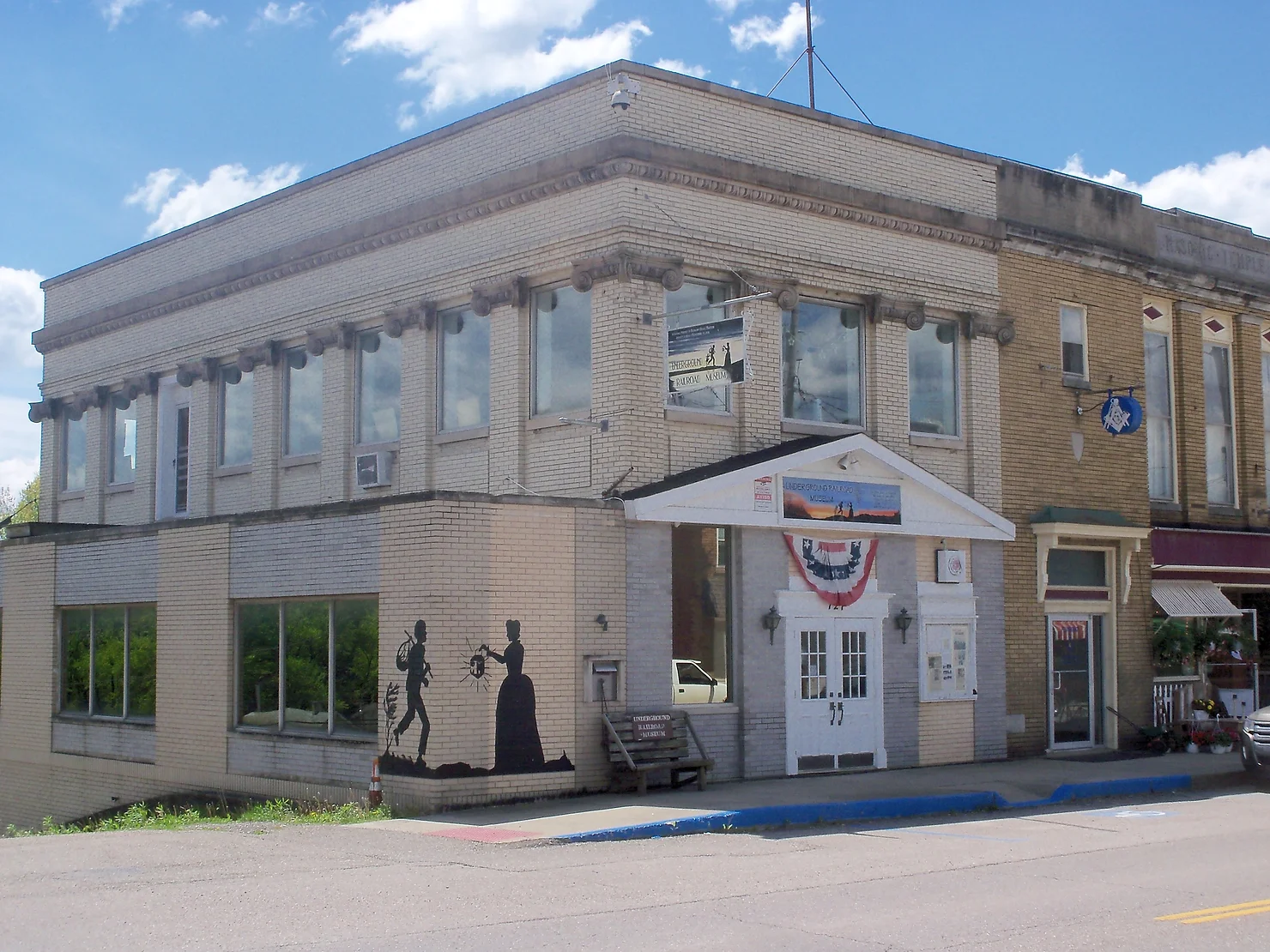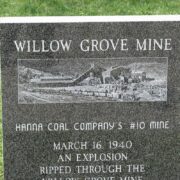
Celebrate Black History Month in Belmont County
African American history is an integral part of the story of Belmont County. With many Quakers settling in the area, the Underground Railroad was very active here. You can learn more about this rich history by visiting the Underground Railroad Museum in Flushing; the Benjamin Lundy house and the Belmont County Heritage Museum in St. Clairsville; and the Captina AME Cemetery near Somerton.

Underground Railroad Museum ( 121 High St., Flushing, Ohio).
The Underground Railroad Museum features an extensive collection of publications, books, memorabilia and other articles. The museum was founded in 1993 by the late Dr. John Mattox and his late wife, Rosalind to preserve the past for future generations. The exhibits portray what is known about slavery and the Underground Railroad in Ohio, and presents an understanding of the culture in the 1800’s. Much of the information and artifacts Mattox has gathered came from local sources. Mattox and the museum were accepted to the National Underground Railroad Network to Freedom Program. Visitors to the museum are encouraged to tell him their own stories and to ask questions as they observe the vast collection of objects, artifacts and documents of the three-story building. The goal of the museum is to demonstrate what we all have in common today rather than placing blame and to prompt young people to seek additional awareness and wisdom. The Ohio Valley area was very active in the Underground Railroad during the 19th century, having been home to many Quaker settlers who were passionate abolitionists. Hours are Tuesdays, Wednesdays and Thursdays from 11 am – 3 pm EST, and on Saturdays by appointment only. Feel free to contact us by phone at 740-968-2080 or 740-391-3135 to schedule an appointment.

The Benjamin Lundy home (164 E. Main St., St. Clairsville).
Born in 1789 to a Quaker family in New Jersey, anti-slavery leader Benjamin Lundy later settled in St. Clairsville, and in 1815 built up a profitable saddlery business along the highway west (that later became I-70). In 1815, he and five others organized an anti-slavery association, known as the Union Humane Society, which within a few months had a membership of more than 500. Prominent members included lawyer journalist Charles Hammond, James Wilson (grandfather of President Woodrow Wilson and Joseph Howells (father of William Dean Howells). Fellow Quaker Charles Osborne, who edited the Philanthropist, also showed him journalism and printing basics. Information about Lundy can be found at the Underground Railroad Museum in Flushing, and the Belmont County Heritage Museum in St. Clairsville (call 740-695-4359 to make an off-season appointment) which is just up the street from the Benjamin Lundy House (not open to the public) at 164 E. Main Street. The building is on the National Register of historic places and there is a plaque on the front of it telling the history of Lundy.
Read more about Lundy and the Underground Railroad Museum http://southeastohiomagazine.com/2017/12/08/discover-benjamin-lundy-and-the-underground-railroad-museum-in-flushing.

The Captina AME Cemetery stands as evidence of a once thriving African American farming community established in the 1820s with the aid of Sandy Harper, who was the community’s leader. Captina was the only free settlement of African Americans in Ohio, prior to the Civil War and was the first in Belmont County.
Captina African Methodist Episcopal Church Cemetery ( Oakes Place/Twp. 30 off of Rt. 148/W. Captina Highway).
The following is from an article written by Somerton historian Bruce Yarnall:
In July of 2014, the Belmont County Chapter of the Ohio Genealogical Society and Mark Morton of Gravestone Guardians of Ohio, with a grant from the Belmont County Tourism Council, began restoring the historic Captina African Methodist Episcopal Church cemetery which dates back to 1830. Interned there are one Mexican War veteran and nine Civil War veterans. Also interned there is Underground Railroad conductor Alexander “Sandy” Harper (c.1804-1889).
Captina AME Cemetery was part of an original family burial plot belonging to a 300 plus acre section of land owned by Harper prior to 1825, the year the church was established. The cemetery stands as evidence of a once thriving African American farming community established in the 1820s with the aid of Harper, who was the community’s leader. Captina was the only free settlement of African Americans in Ohio, prior to the Civil War and was the first in Belmont County.
Captina, originally called Guinea, became a stop on the Underground Railroad, a national network of volunteers who directed slaves northward. Like the Quakers in the area, the free blacks directed slaves along the railroad. Guinea had cross connections to Somerton, where Dr. William Schooley helped the fugitives. Stops were also located in Belmont, Quaker City and Barnesville. Guinea was known as a safe stop where the residents were reportedly well-armed. Following the end of the Civil War and slavery, Captina continued to be a farming community and the church continued to be the center of it. Black citizens from Barnesville also attended the church until what became the Bethel A.M.E. church was formed there in 1864.
By the turn of the Twentieth Century, the community’s population dwindled, and later, with the influence of the Great Depression and the lure of the city, the number of black residents in the area, now known as Flatrock, further thinned until, by 1940, all had gone elsewhere. At the church, irregular services were conducted through the 1950′s when the building hosted an annual reunion and an occasional service until 1962. The building then fell into disrepair and collapsed during a windstorm in 1978.
Harper is buried in this cemetery, along with Benjamin Oliver McMichael (1865-1941), an educator who taught for 12 years in Captina/ Flatrock at a segregated schoolhouse. There are now 130 known burials in the cemetery, including at least nine Civil War veterans.





